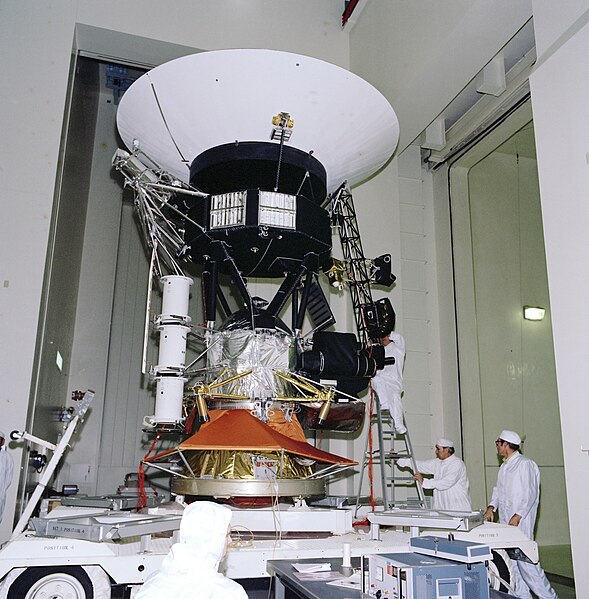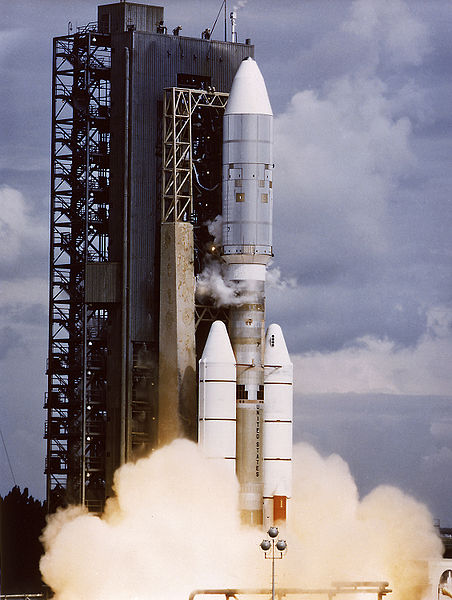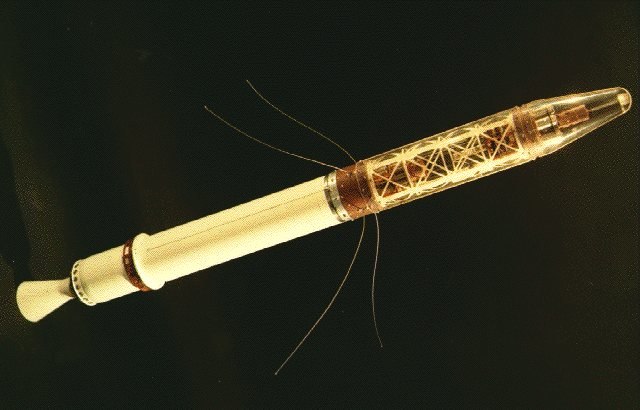Voyager 2 is a space probe launched by NASA on August 20, 1977, as a part of the Voyager program. It was launched on a trajectory toward the gas giants Jupiter and Saturn and enabled further encounters with the ice giants Uranus and Neptune. It remains the only spacecraft to have visited either of the ice giant planets, and was the third of five spacecraft to achieve Solar escape velocity, which will allow it to leave the Solar System. It has been sending scientific data to Earth for 46 years, 8 months, 23 days, making it the oldest active space probe. Launched 16 days before its twin Voyager 1, the primary mission of the spacecraft was to study the outer planets and its extended mission is to study interstellar space beyond the Sun's heliosphere.
Voyager in transport to a solar thermal test chamber.
Voyager 2 awaiting payload entry into a Titan IIIE/Centaur rocket.
Voyager 2 launch on August 20, 1977, with a Titan IIIE/Centaur
The Great Red Spot photographed during the Voyager 2 flyby of Jupiter
Uncrewed spacecraft or robotic spacecraft are spacecraft without people on board. Uncrewed spacecraft may have varying levels of autonomy from human input, such as remote control, or remote guidance. They may also be autonomous, in which they have a pre-programmed list of operations that will be executed unless otherwise instructed. A robotic spacecraft for scientific measurements is often called a space probe or space observatory.
A replica of Sputnik 1 at the U.S. National Air and Space Museum
A replica of Explorer 1
An illustration's of NASA's planned Orion spacecraft approaching a robotic asteroid capture vehicle
A collage of automated cargo spacecraft used in the past or present to resupply the International Space Station








